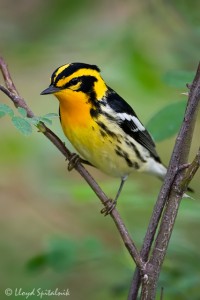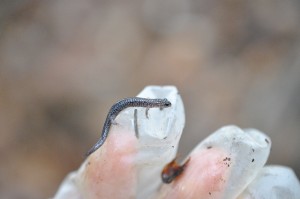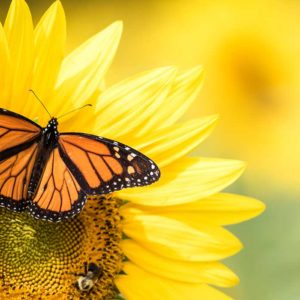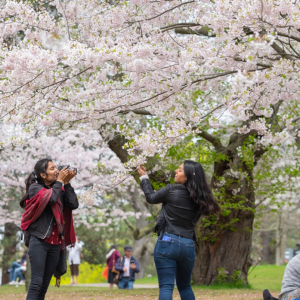Monarchs & Nighthawks – Day 2 of our July NatureBlitz (Part 2 of 3)
by Nicholas Conroy, NatureHood Conservation Intern

A Blackburnian Warbler, a bird species seen on the early songbird walk in Carlington Woods
Day 2 began early the following morning of day 1 (July 18th). A warm, sticky morning made for a successful songbird walk, guided by Emily Bird. There were a few surprises, including a great species for the Ottawa region, the Blackburnian Warbler. These birds are gorgeous; deep orange patches on its head, and black and white streaking on their back. The morning is always a great time to bird. Why? This is due to birds calling out to the surrounding area, letting other birds know “I’m here!” Although in the spring, males will have a different sound, this time they’ll sing a song, trying to attract females to be potential mates.
Between 8 am and 10 am, there was a scavenger hunt with a great turn out. Many of the children came back to receive their prize of bookmarks, bird guides and species at risk trading cards.
At 10 am, a large group joined William Halliday and Nicolas Conroy for a snake walk. Here in Ottawa, there are no venomous species present. Almost all of the species in Ottawa have very small teeth, which feel more like the rough side of Velcro. The group walked along the forest edge, and pre-placed boards were set up to attract them. Sadly, no snakes were found, but William had brought a few from a different location and showed everyone just what they were looking for, allowing everyone to touch a snake. If you own a lot of land, placing dark, flat objects in fields or near edges of water are a great way to help out snakes. Most of the day, snakes are hiding. They don’t like to be exposed, and will slither under objects to seek cover. In the morning and evening, they will look for warm areas to keep their body temperature up as the sun goes down.

A lungless species, the Red-backed Salamander, can breathe without lungs due to its extremely permeable skin. Photo: Nicolas Conroy
As the snake walk wrapped up, the focus went from reptiles, to amphibians, with a special presentation by Save the Salamanders. Many salamanders were brought; some exotic, some native, and everyone attending got to see every one up close. Salamanders (like many amphibians), have extremely sensitive skin. So sensitive, that it’s not always best to pick up a salamander with your bare hand. The natural oils and salts on your skin can be absorbed into the salamander, cause chemical imbalances and possible problems to the amphibian. This is why using powder free latex/nitrile gloves. Some salamanders are very small, and can sit on the end of your finger!
Part 3 will be up soon, showcasing the results and highlights from our mothing event! This event marks the beginning of National Moth Week across Canada. See you then!



